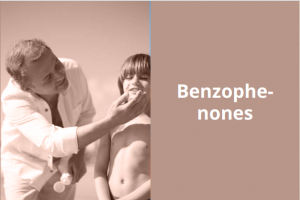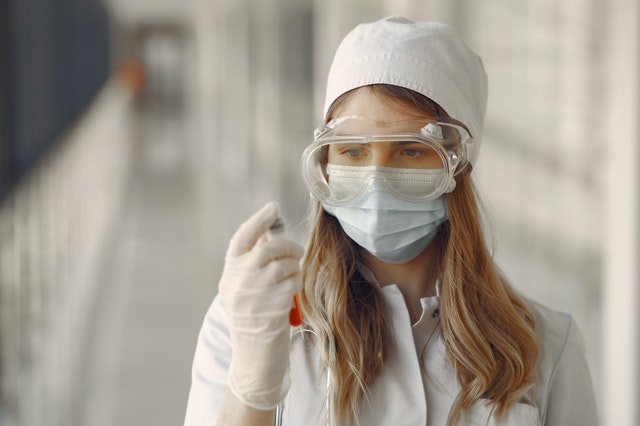 The HBM4EU Scoping document on benzophenones (UV filters) provides background information on these substances, identifies relevant policy questions on the group of substances and outlines research activities under HBM4EU.
The HBM4EU Scoping document on benzophenones (UV filters) provides background information on these substances, identifies relevant policy questions on the group of substances and outlines research activities under HBM4EU.
The lead author of the scoping document was Tamar Berman of the Israel Ministry of Health (MOH-IL). The document was published in March 2019 and updated in December 2020.
Click here to read a report on HBM4EU activities on benzophenones from 2020.
A 2020 report on the legislative status of benzophenones in the European Union is available here.
A number of communication products have been developed for Benzophenones, such as the policy brief, infographic, substance report and video.
Uses of Benzophenones
UV filters, including benzophenones, are widely used in cosmetics, personal care products, food contact materials, inks, textiles and other consumer products. Therefore, there is a high potential for the general public (including vulnerable populations) to be exposed to benzophenones.
While UV filters in sunscreens and cosmetics have been effective in protecting against a variety of UV-related pathologies, such as sunburns and melanomas, growing popularity of sunscreens and increasing potential exposure has led to increased societal concern about their potential impact on the environment and human health.
Hazardous properties of Benzophenones
Benzophenone 3 (BP-3) displays a low acute toxicity profile. It is not considered as being irritating to the skin and the eyes1. Results from animal studies—primarily dietary studies that affected body weight gain—showed alterations in liver, kidney, and reproductive organs in rats and mice with BP-3 administered dermally and orally2. BP-3 is on the Community Rolling Action Plan (CoRAP) list because of potential endocrine disruption3. BP-3 elicited anti-androgenic activity in a human breast carcinoma cell line4 and interferes with functions of human sperm cells in vitro5. Critical effects are maternal and developmental toxicity6. In female mice, low dose exposure causes long-lasting alterations to mammary gland morphology and function7. Studies in rat primary cortical neuronal cultures and neuroblastoma cell lines showed decreased cell viability after BP-3 treatment at moderate concentrations8.
In a study on young men from Spain, there was a significant positive association between urinary BP-3 concentrations and serum FSH levels9. In male adolescents in the US, urinary BP-3 was associated with lower total testosterone10. In a study of young Danish men, associations between male reproductive health parameters and urinary levels of benzophenones such as BP-3, BP-1 and 4-HBP were observed in filaggrin gene mutation carriers but not in controls11. In a study in healthy, premenopausal women, UV filter factors (BP-1, BP-3) were associated with decreased estradiol, FSH, and LH12.
Benzophenone is possibly carcinogenic to humans (Group 2B, IARC classification, based on sufficient evidence in experimental animals).4 Benzophenone exerts tumourigenic effects in rats and mice in the liver, the kidney and in the haematopoetic system, including rare histiocytic sarcomas. Available evidence supports that benzophenone is not genotoxic. Benzophenone meets the criteria for classification as carcinogenic in category 213. Benzophenone may alter endocrine signalling through multiple effects on receptors.4 Critical effects are liver and kidney effects.6
Benzophenone-1 (BP-1) is used as a UV filter, but is also the major metabolite of BP-3. BP-1 is not irritating nor sensitizing at concentrations that may be found in cosmetic products. The toxicity studies available indicate low acute and subchronic toxicity of BP-1. BP-1 is not mutagenic. The lowest effect levels were determined for reproductive toxicity with lowest observable adverse effect levels (LOAELs) between 100-625 mg/kg and NOAELs between 100-250 mg/kg. BP-1 is on the European Commission priority list of potential endocrine disruptors.6
In a study of young Danish men, associations between male reproductive health parameters and urinary levels of benzophenones such as BP-3, BP-1 and 4-HBP were observed in filaggrin gene mutation carriers but not in controls.11 In a study in healthy, premenopausal women, UV filter factors (BP-1, BP-3) were associated with decreased estradiol, FSH, and LH.12
Benzophenone-2 (BP-2) is a UV filter used in personal care products. BP-2 may disturb thyroid hormone homeostasis by inhibiting or inactivating thyroid peroxidase, effects that are even more pronounced in the absence of iodide14. Both BP-2 and BP-3 were shown to exert uterotrophic effects and BP2 was shown to bind to estrogen receptors15. In fish and mammals, BP-2 induces a variety of reproductive disorders, including feminization of male fish, inhibition of gamete development in fish, reduction of testosterone secretions from testicular tissue, induction of uterotrophic effects in rats, changes in bone density and osteo-regulation, changes in LH, cholesterol levels, fat deposition, and an increased risk of endometriosis16.
In a study on exposure to UV filters and fertility, male partners’ concentrations BP-2 was associated with reduced fecundity17.
4-Methylbenzylidene camphor (4-MBC) is found in cosmetics and in drinking water.6 The available data suggest no genotoxicity, mutagenic potential or phototoxicity of 4-MBC. However, this chemical is suspected to have a mild endocrine disrupting effect on the thyroid gland. Experiments on rats found 4-MBC to have development toxicity.6,18
3-benzylidene camphor (3-BC) – 3-BC is a potential endocrine disrupter. Experiments in vivo and in vitro revealed oestrogenic activity. In addition, 3-BC was found to interrupt sexual development and maturation in animal models.14 According to the Scientific Committee on Consumer Safety, hormonal activities of 3-BC have been reported in vitro: estrogenic and anti-estrogenic effects as well anti- androgenic activities. In vivo, the expression of target genes (ERα, ERβ, SRC-1 and PR (progesterone receptor)) has been shown to be altered in both males and females rats.15
4-hydroxy benzophenone (4-HBP) is used as an industrial UV-filter. 4-HBP has potential to disrupt endocrine activity, and fetal growth. 4-HBP exposure in women carrying a male fetus was associated with increased maternal thyroid hormone concentrations, in addition to decreased birth outcomes (lower weight and shorter head and abdominal circumferences at birth compared to the low exposure group)19.
4-methylbenzophenone (4-MBP) is used in paints and varnishes, in food packaging but not in cosmetics.5 According to an assessment by EFSA, the currently available data on 4-methylbenzophenone are insufficient to enable the assessment of this substance with respect to its human toxicological effects. 4-MBP is expected to be a non-genotoxic carcinogen20.
Substances included in the Benzophenones group
Please see the link to the scoping document on Benzophenones at the top of the page for this information.
Human exposure to Benzophenones
- Benzophenone is manufactured and/or imported in the European Economic Area in 1000-10000 tonnes per year; it is used by consumers, by professional workers (widespread uses), in formulations or re-packaging and at industrial sites.
- Benzophenones are used in cosmetics and in personal care products, food contact materials, coating products, fillers, modelling clay and finger paints. UV-absorbers and UV filters including benzophenone-1 and benzophenone-3 are added to food packaging to protect the packaging itself and the contained food from harmful UV light.6
- Release to the environment is likely to occur from: industrial use, indoor use (e.g. machine wash detergents, personal care products, paints and coating, fragrances and air fresheners).
- Biological half-life (in serum) of 19 hours 4.
- Human biomonitoring (HBM) data: pregnant women in US (California)21, France22, China23, Israel24, general public in Belgium25, Denmark26, and the US27. Data on exposure in children in available for the US28, Denmark29,30,31,32, China33, Australia34, Taiwan35 and Germany36 (GerES V, publication in preparation, for HBM4EU available data on 3 to 14 year old children and adolescents; young adults: 20-29 years, Environmental Specimen Bank).
- Several biomonitoring studies (including NHANES) have focused on BP-3.27 BP-3 has been widely detected in several biomonitoring studies with urinary levels correlated with the use of personal care products. Higher BP3 exposure has been observed in the female population, possible due to its presence in personal care products27.
Technical challenges in biomonitoring Benzophenones in humans
- BP-3 can be directly measured and quantified in urine in HBM studies. Benzophenones including BP-1 and BP-3 can be measured using an on-line LC/LC-MS/MS method for the simultaneous determination of nine parabens and seven environmental phenols in urine41. In addition, three oxidative metabolites (2,4-dihydroxylbenzophenone, 2,2′-dihydroxy-4-methoxybenzophenone, and 2,3,4-trihydroxybenzophenone) can also be measured in HBM studies using quantitative analytical methods42.
- 4 – MBC urinary metabolites (3- (4-carboxybenzylidene) camphor and 3-(4-carboxybenzylidene)-6-hydroxycamphor) can be measured using gas chromatography high resolution mass spectrometry (GC-HRMS)43.
- LC-MS/MS based methods have been developed in Germany36 for simultaneous biomonitoring of nine parabens and seven environmental phenols including BP-3 and BP-1 and in Denmark32 for simultaneous biomonitoring of nine UV filters in urine (BP, BP-1, BP-2, BP-3, 3-BC, 4-MBC, 4-HBP, 4-HBP, and 5-chloro-2- hydroxybenzophenone). However, urine might not be the preferred matrix for measurements of the most lipophilic UV filters such as 3-BC and 4-MBC.
Legislative status in the European Union
Following on the Advisory Board’s advice to strengthen the science-policy interface, HBM4EU developed a strategic and systematic approach to outreach and align science and policy. A legislative mapping exercise was done by RPA Consultants, providing relevant public policy processes that may benefit from the knowledge generated under HBM4EU. The documents are available for consultation here, with the tables presented here.
Since September 2017 the use of BP-3 in the EU is restricted to 6% in cosmetic sunscreen products and up to 0.5 % in other cosmetic products37. According to the Cosmetics Regulation (EU Regulation 1223/2009). BP-4 and BP-5 are permitted as UV filters in cosmetic products. 4-MBC is allowed as a UV filter in cosmetic products with a maximum concentration of 4% in ready-for-use preparations38.
According to the Scientific Committee on Consumer Safety, the use of 3-BC as a UV-filter in cosmetic products in a concentration up 2.0% is not safe39.
Benzophenone is approved as an additive in plastic food contact materials, with a specific migration limit of 0.6 mg/kg40.
Inks are not covered by a specific European legislation on food contact materials. The use of printing inks has to comply with the general rules of Regulation (EC) No 1935/2004 and with good manufacturing practice as laid down in Commission Regulation (EC) No 2023/2006.
Policy-related questions
- Are sensitive, reliable and cost effective methods and biomarkers available to measure UV filters?
- What are current exposure levels to benzophenones in the EU population (cumulative exposure from different exposures sources)?
- What are the major sources of exposure to benzophenones in the EU population and in vulnerable groups such as children and pregnant women? (Sunscreens, cosmetics and personal care products, plastic and other food contact materials, textiles, furnitures and building materials and others)
- Do exposure levels differ significantly between different EU countries (possibly related to climate)?
- Do exposure levels differ between different sub-groups: elderly, adults, and children? between males and females? Between adults of different age groups? Between individuals in different ethnic subgroups (perhaps due to differences in use of sunscreen products)?
- Are current exposure levels safe in relation to the endocrine and carcinogenic properties of benzophenones? (for the general population and for vulnerable groups such as children and pregnant women)
- Was the restriction of BP-3 in cosmetics in the EU (September 2017) effective in reducing public exposure? Did exposure to other benzophenone or other UV filter compounds increase as a result?
Please find answers to the updated (2020) Policy-related questions on Benzophenones here
Stakeholder comments on the scoping document
In the interest of transparency and accountability, HBM4EU invites interested stakeholders to submit comments on the scoping document on acrylamide.
All submitted comments will be made available for download on this webpage and will be taken into consideration by the HBM4EU consortium, where possible.
Please click here to submit your comments.
Substance Report
References
- European Commission, Scientific Committee on Consumer Products. 2008. Opinion on Benzophenon-3. https://ec.europa.eu/health/ph_risk/committees/04_sccp/docs/sccp_o_159.pdf
- National Toxicology Program. NTP Technical Report on Toxicity Studies of 2-Hydroxy-4-methoxybenzophenone (CAS Number: 131-57-7) Administered Topically and in Dosed Feed to F344/N Rats and B6C3F1 Mice. Research Triangle Park, NC: National Toxicology Program, National Institute of Environmental Health Sciences, U.S. Department of Health and Human Services; 1992.
- Substance Evaluation – coRap https://echa.europa.eu/information-on-chemicals/evaluation/community-rolling-action-plan/corap-table/-/dislist/details/0b0236e1806e6bdd
- IARC, 2013, Monograph on benzophenone, vol 101, IARC
- Rehfeld A, Dissing S, Skakkebæk NE. Chemical UV Filters Mimic the Effect of Progesterone on Ca(2+) Signaling in Human Sperm Cells. Endocrinology. 2016 Nov;157(11):4297-4308.
- Danish Environmental Protection Agency. 2015. “Survey and Health Assessment of UV Filters: Survey of Chemical Substances in Consumer Products No. 142, 2015.” 2015. http://mst.dk/service/publikationer/publikationsarkiv/2015/okt/survey-and-health-assessment-of-uv-filters/
- Charlotte D LaPlante, Ruby Bansal, Karen A Dunphy, D Joseph Jerry, Laura N Vandenberg. Oxybenzone Alters Mammary Gland Morphology in Mice Exposed During Pregnancy and Lactation. J Endocr Soc. 2018 Aug 1; 2(8): 903–921.
- Ruszkiewicz, J.A., Pinkas, A., Ferrer, B., Peres, T.V., Tsatsakis, A., Aschner, M., 2017. Neurotoxic effect of active ingredients in sunscreen products, a contemporary review. Toxicology reports 4, 245-259.
- Adoamnei E et al. Urinary concentrations of benzophenone-type ultra violet light filters and reproductive parameters in young men. Int J Hyg Environ Health. 2018 Apr;221(3):531-540. doi: 10.1016/j.ijheh.2018.02.002
- Scinicariello F, Buser MC. Serum Testosterone Concentrations and Urinary Bisphenol A, Benzophenone-3, Triclosan, and Paraben Levels in Male and Female Children and Adolescents: NHANES 2011-2012. Environ Health Perspect. 2016 Dec;124(12):1898-1904
- Joenen UN, Jørgensen N, Thyssen JP, Szecsi PB, Stender S, Petersen JH, Andersson AM, Frederiksen H. Urinary excretion of phenols, parabens and benzophenones in young men: Associations to reproductive hormones and semen quality are modified by mutations in the Filaggrin gene. Environ Int. 2018 Dec;121(Pt 1):365-374. doi: 10.1016/j.envint.2018.09.020.
- Pollack AZ, Mumford SL, Krall JR, Carmichael AE, Sjaarda LA, Perkins NJ, Kannan K, Schisterman EF. Exposure to bisphenol A, chlorophenols, benzophenones, and parabens in relation to reproductive hormones in healthy women: A chemical mixture approach. Environ Int. 2018 Nov;120:137-144. doi: 10.1016/j.envint.2018.07.028. Epub 2018 Aug 10
- ECHA. Substance Evaluation Conclusion as required by REACH Article 48 and Evaluation report 2018.
- Schmutzler C, Bacinski A, Gotthardt I, Huhne K, Ambrugger P, Klammer H, Schlecht C, Hoang-Vu C, Grüters A, Wuttke W, Jarry H, Köhrle J. The ultraviolet filter benzophenone 2 interferes with the thyroid hormone axis in rats and is a potent in vitro inhibitor of human recombinant thyroid peroxidase Endocrinology. 2007 Jun;148(6):2835-44.
- Schlecht C, Klammer H, Jarry H, Wuttke W. Effects of estradiol, benzophenone-2 and benzophenone-3 on the expression pattern of the estrogen receptors (ER) alpha and beta, the estrogen receptor-related receptor 1 (ERR1) and the aryl hydrocarbon receptor (AhR) in adult ovariectomized rats.Toxicology. 2004 Dec 1;205(1-2):123-30.
- Downs CA, Kramarsky-Winter E, Fauth JE, Segal R, Bronstein O, Jeger R, Lichtenfeld Y, Woodley CM, Pennington P, Kushmaro A, Loya Y. Toxicological effects of the sunscreen UV filter, benzophenone-2, on planulae and in vitro cells of the coral, Stylophora pistillata Ecotoxicology. 2014 Mar;23(2):175-91.
- Buck Louis GM, Kannan K, Sapra KJ, Maisog J, Sundaram R Urinary concentrations of benzophenone-type ultraviolet radiation filters and couples’ fecundity. Am J Epidemiol. 2014 Dec 15;180(12):1168-75.
- Kraue, M., A. Klit, M. Blomberg Jensen, T. Søeborg, H. Frederiksen, M. Schlumpf, W. Lichtensteiger, N. E. Skakkebaek, and K. T. Drzewiecki. 2012. “Sunscreens: Are They Beneficial for Health? An Overview of Endocrine Disrupting Properties of UV-Filters.” International Journal of Andrology 35 (3):424–36. https://doi.org/10.1111/j.1365-2605.2012.01280.x
- Krause M et al. Maternal exposure to UV filters: associations with maternal thyroid hormones, IGF-I/IGFBP3 and birth outcomes. Endocr Connect. 2018 Feb;7(2):334-346. doi: 10.1530/EC-17-0375. Epub 2018 Jan 23.
- EFSA. 2009a. “EFSA Statement on the Presence of 4-Methylbenzophenone Found in Breakfast Cereals.” EFSA Journal 7 (3):n/a-n/a. https://doi.org/10.2903/j.efsa.2009.243r
- Biomonitoring California. Maternal and Infant Environmental Exposure Project (MIEEP) https://biomonitoring.ca.gov/projects/maternal-and-infant-environmental-exposure-project-mieep
- Philippat, Claire, Mary S. Wolff, Antonia M. Calafat, Xiaoyun Ye, Rebecca Bausell, Molly Meadows, Joanne Stone, Rémy Slama, and Stephanie M. Engel. 2013. “Prenatal Exposure to Environmental Phenols: Concentrations in Amniotic Fluid and Variability in Urinary Concentrations during Pregnancy.” Environmental Health Perspectives 121 (10):1225–31. https://doi.org/10.1289/ehp.1206335
- Zhang, T., Sun, H., Qin, X., Wu, Q., Zhang, Y., Ma, J., Kannan, K., 2013. Benzophenone-type UV filters in urine and blood from children, adults, and pregnant women in China: partitioning between blood and urine as well as maternal and fetal cord blood. The Science of the total environment 461-462, 49-55.
- Machtnger R, Berman T, Adir M, Mansur A, Baccarelli AA, Racowsky C, Calafat AM, Hauser R, Nahum R. 2018. ” Urinary concentrations of phthalate metabolites, bisphenols and personal care product chemical biomarkers in pregnant women in Israel.” Environ Int. 116:319-325.
- Dewalque L, Pirard C, Charlier C. Measurement of Urinary Biomarkers of Parabens, Benzophenone-3, and Phthalates in a Belgian Population. Biomed Res Int. 2014; 2014: 649314.
- Morrison, Glenn C., Gabriel Bekö, Charles J. Weschler, Tobias Schripp, Tunga Salthammer, Jonathan Hill, Anna-Maria Andersson, Jørn Toftum, Geo Clausen, and Hanne Frederiksen. 2017. “Dermal Uptake of Benzophenone-3 from Clothing.” Environmental Science & Technology 51 (19):11371–79. https://doi.org/10.1021/acs.est.7b02623
- Calafat AM, Wong LY, Ye X, Reidy JA, Needham LL. Concentrations of the sunscreen agent benzophenone-3 in residents of the United States: National Health and Nutrition Examination Survey 2003–2004. Environ Health Perspect 2008;116(7):893-897.
- US Centers for Disease Control. National Report on Human Exposure to Environmental Chemicals https://www.cdc.gov/exposurereport/pdf/FourthReport_UpdatedTables_Volume1_Mar2018.pdf
- Krause, Marianna, Anna-Maria Andersson, Niels E. Skakkebaek, and Hanne Frederiksen. 2017. “Exposure to UV Filters during Summer and Winter in Danish Kindergarten Children.” Environment International 99 (Supplement C):177–84. https://doi.org/10.1016/j.envint.2016.11.011
- Frederiksen H., Jensen T.K., Jørgensen N., Boye Kyhl H., Husby S., Skakkebæk N.E., Main K.M., Juul A., Anderson A.-M. (2014) Human urinary excretion of non-persistent environmental chemicals: an overview of Danish data collected 2006-2012. Reproduction 147, 555-565
- Frederiksen H., Nielsen J.K.S., Mørck, T.A., Hansen, P.W. Nielsen, O., Anderson A.-M., Knudsen L.E. (2013) Urinary excretion of phthalate metabolites, phenols and parabens in rural and urban populations of Danish school children and their mothers. Int J Hygiene and Env Health. 216, 772-783.
- Frederiksen, Hanne, Ole Nielsen, Niels E. Skakkebaek, Anders Juul, and Anna-Maria Andersson. 2017. “UV Filters Analyzed by Isotope Diluted TurboFlow-LC-MS/MS in Urine from Danish children and adolescents. Int J Hyg Environ Health. 2017 Mar;220(2 Pt A):244-253.
- Gao CJ, Liu LY, Ma WL2, Zhu NZ2, Jiang L, Li YF, Kannan K. Benzonphenone-type UV filters in urine of Chinese young adults: Concentration, source and exposure. Environ Pollut. 2015 Aug;203:1-6.
- A.L.Heffernan, C. Baduel L.M.L. Toms,A.M. Calafat, X. Ye, P. Hobson, S. Broomhall, and J.F. Mueller. Use of pooled samples to assess human exposure to parabens, benzophenone-3 and triclosan in Queensland, Australia. Environ Int. 2015 Dec; 85: 77–83.
- Chang FK, Shiea J, Tsai HJ. Urinary Concentrations of Triclosan, Benzophenone-3, and Bisphenol A in Taiwanese Children and Adolescents. Int J Environ Res Public Health. 2017 Dec 10;14(12).
- Moos RK, Angerer J, Wittsiepe J, Wilhelm M, Brüning T, Koch HM. Rapid determination of nine parabens and seven other environmental phenols in urine. Int J Hyg Environ Health. 2014 Nov;217(8):845-53. doi: 10.1016/j.ijheh.2014.06.003.
- COMMISSION REGULATION (EU). 2017/238.
- https://eur-lex.europa.eu/legal-content/EN/TXT/PDF/?uri=CELEX:32017R0238&rid=7
- Annex VI, Last update: 14/09/2018. LIST OF UV FILTERS ALLOWED IN COSMETIC PRODUCTS. http://ec.europa.eu/growth/tools-databases/cosing/pdf/COSING_Annex%20VI_v2.pdf
- Scientific Committee on Consumer Safety. Opinion On 3-Benzylidene camphor. https://ec.europa.eu/health/scientific_committees/consumer_safety/docs/sccs_o_134.pdf
- Commission Regulation (EU) No 10/2011 of 14 January 2011 on plastic materials and articles intended to come into contact with food.
- https://eur-lex.europa.eu/legal-content/EN/TXT/?uri=CELEX%3A02011R0010-20140324
- Moos RK, Angerer J, Wittsiepe J, Wilhelm M, Brüning T, Koch HM. Rapid determination of nine parabens and seven other environmental phenols in urine samples of German children and adults. Int J Hyg Environ Health. 2014 Nov;217(8):845-53.
- Ye X, Kuklenyik Z, Needham LL, Calafat AM. Quantification of urinary conjugates of bisphenol A, 2,5-dichlorophenol, and 2-hydroxy-4-methoxybenzophenone in humans by online solid phase extraction-high performance liquid chromatography-tandem mass spectrometry. Anal Bioanal Chem 2005;383(4):638 644.
- Leng G, Gries W. New specific and sensitive biomonitoring methods for chemicals of emerging health relevance. Int J Hyg Environ Health. 2017 Mar;220(2 Pt A):113-122.
- Justification for the Selection of a Substance for CoRAP Inclusion: Oxybenzone. 2014. https://echa.europa.eu/documents/10162/2463d88e-7333-46a1-8d26-7e9c01c663f3
Disclaimer
The HBM4EU project was launched in 2016 with the aim of improving the collective understanding of human exposure to hazardous chemicals and developing HBM as an exposure assessment method. The project had €74m in funding and jointly implemented by 120 partners from 28 participating countries – 24 EU member states plus Norway, Switzerland, Iceland and Israel and the European Environment Agency. One of its aims was to ensure the sustainability of HBM in the EU beyond 2021. The project ended in June 2022. The website will not be updated any longer, except the page on peer reviewed publications, but will be online until 2032.
 The HBM4EU Scoping document on benzophenones (UV filters) provides background information on these substances, identifies relevant policy questions on the group of substances and outlines research activities under HBM4EU.
The HBM4EU Scoping document on benzophenones (UV filters) provides background information on these substances, identifies relevant policy questions on the group of substances and outlines research activities under HBM4EU.

